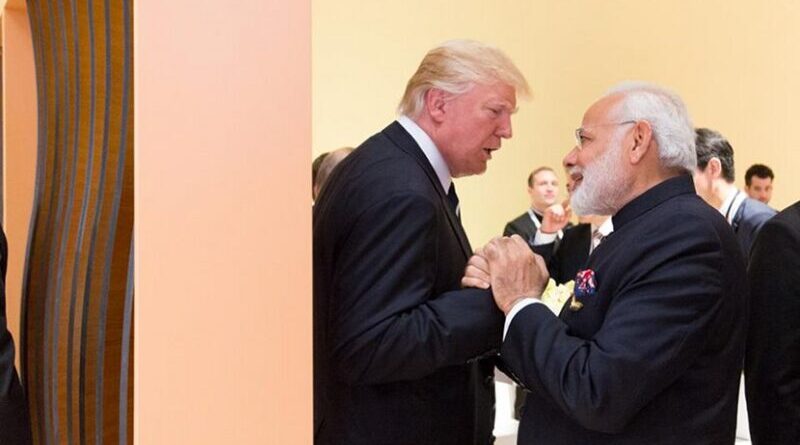Economic Conundrum And Job Creation: Dichotomy Hovers On ‘Modinomics’ – Analysis
Debaters wade in row over India;s economic growth and its impact on employment generation, after GDP growth slashed to 5.7 percent in the first quarter of 2017-18. Prime Minister Narendra Modi committed one crore ( 10 million ) jobs a year before the election in 2014. According to Labour Bureau statistics, job creation for 2015 and 2016 ( April – December) were at much lower level than committed – 15.5 million and 23.1 million respectively.
Indian analysts held NDA responsible for mishandling the economy and cursed the government for faulty manufacturing policy. Manufacturing sector – the core sector for the GDP growth – witnessed a drastic fall in the growth to 1.2 percent in the first quarter of GDP growth in 2017-18 against 10.7 percent growth in the corresponding period in the preceding year. Manufacturing or Make in India was the focus area for employment generation in Modinomics
Contrary to these, multinational institutions like IMF and Morgan Stanley were upbeat on the India growth trajectory from the perspectives of long term growth and recovery. They overlooked the temporary hick-up in their assessment.
The IMF, in its recent report on World Economic Outlook, forecast a strong recovery in the Indian economy in 2018-19 with 7.4 percent growth, after a laggard growth of 6.7 percent in the current year 2017-18 due to lingering of demonetization impact. Morgan Stanley pitched for over-lasting growth, ranking up India to be 3rd biggest economy in the world in 2026-27. At present, India is the 6th biggest economy in the world in terms of nominal GDP. Both IMF and Morgan Stanley presumed continuance of strong economic parameters, considering that the jerk in the first quarter of growth was transient.
The BSE Sensex was mute to the jerk, despite the fact that Sensex is the first to be vulnerable to any upheaval in the growth, short or long term. Sensex continued to surge and was expected to exceed 1,00,000 by 2026-27, according Morgan Stanley report.
If statistics are any indicator to map out the impact of Modinomocs on job creations, they decipher that several schemes of Make in India failed to unleash desired results for job creations. Start-up, digitization, Smart-city programme lagged behind in creating jobs.
Various reasons focused for failure of Make in India. One of them was domestic investors’ laggardness to invest in Modi regime. What led the domestic investors to shy away, when the foreign investors were upbeat to invest in the Modi regime? Foreign direct investment doubled to US $47 billion in 2016, from US $ 22 billion in 2013. BSE Sensex, which is driven by FIIs (Foreign Institutional Investors), surged despite the GDP conundrum.
The moot point in the lackluster domestic investment was the lag in reforms in regulatory policy framework. Reforms in Land acquisition regulations and labour laws were put in in the backburner due to minority strength of NDA in Rajya Sabha. State level amendments were pushed for Land Acquisition reforms in some states (Gujarat, Rajasthan, Maharashtra, Jharkhand and Telengana). But they are yet to be put into operations.
Even though foreign investment surged, but it failed to create more job opportunities too. The crux of the situation was that more than 85 percent of foreign direct investment was in the greenfield areas. Generally, a green field project in manufacturing requires 2-3 three years gestation period to start the operation. Given these, yields of job creations from theses FDI projects will be visible only after 2018. Therefore, it is time period which will decide the impact of foreign investment on employment opportunities.
India’s economy is at the inflection point. It will witness a shift in its demand pattern. According to Morgan Stanley’s report, middle class will shift to upper middle class by 2026-27. Young India, digitization, wheel revolution ( automobile) and spurring home purchasing will be the main driving forces for new demand. India will be the youngest country in the world by 2020. With the median age 29, India will have 400 young people.
Digitization will be the boost to growth, according to Morgan Stanley. Digital India and Smart cities are the long term projects to generate employment opportunities. They are at the nascent stages and take time to be in full operation. Under the Smart-city initiatives, so far 60 out 100 cities could determine the projects costs. Of these, only 16 projects are in the implementations and the remaining 45 are at various stages of tendering.
Considering vast changes in the technology and industrial structure since 1991, need for changes in the Industrial policy was felt imperative. A discussion paper was circulated for seeking different advises and opinions for a new shape to Industrial Policy with a focus on Reform, Perform and Transform. The paper asserted for global linkages, gave thrusts on new industries like automobiles, electronics, renewable energies, banking, software and tourism and warrant for land reforms. But, the discussion paper remains a document so far.
The year 2018 will be the turning point for Indian manufacturing sector under Make in India initiative. With BJP and its allies making a big inroad in Rajya Sabha after one-third of the members retire, two major pending reforms, land acquisition bill and labour reform , will find easy access for Parliamentary approval.
The new political landscape in 2018, which will give more free hand to NDA accelerate reforms, will endorse IMF forecast for the recovery of the economy, when the GDP growth was expected to reach 7.4 percent in 2018-19.
Therefore, given the strong economic parameters and a strong platform for Young India, it will be pessimism to presume that a short hiccup in first quarter growth will play a strong headwind to growth trajectory of Indian economy and will impact job opportunities from the long term perspectives.
Views expressed are personal

